Advertisement
An Inside Look At Making Clothes In An American Factory
Resume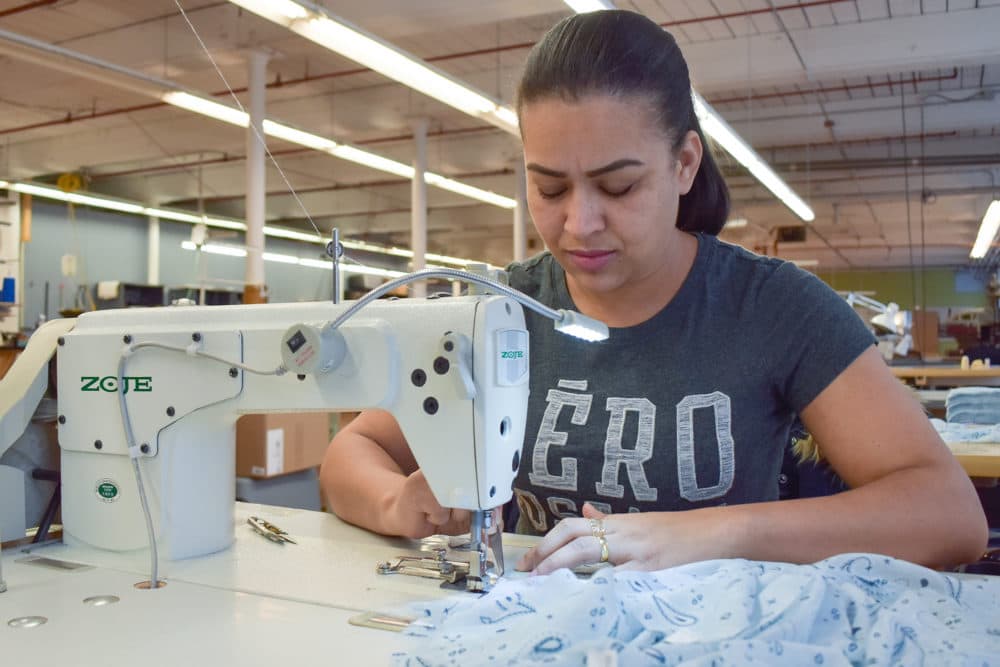
There aren’t many places in the United States where workers sit at sewing machines and make clothes by hand.
Good Clothing Company in Fall River, Massachusetts, is one of the few. The company can make anything from sweaters, shirts, jackets, dresses — even thousands of $17 scrunchies designed by Kaitlyn Bristowe of “The Bachelorette.”
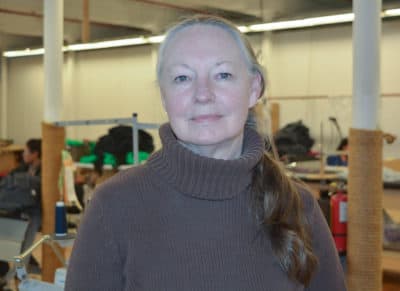
Co-founder Jeanine Duquette says there’s an advantage to domestically producing products like Bristowe’s scrunchies because of the quick turnaround.
“We need to get the fabric and we need to get it cut. We need to get it made. We need to start shipping fast,” she says, snapping her fingers. “That would not happen with China because you'd have to wait for it to get here and there's communication issues.”
More than 95% of apparel sold in the U.S. is imported. It would probably be cheaper to manufacture the trendy hair bands abroad, Duquette says, but low costs are not Good Clothing Company’s priority.
Duquette says she and her co-founder, Kathryn Hilderbrand, started the company to help emerging designers produce clothes without factory minimum — which can range from 300 to thousands of items.
The company requires designers to commit to 10 garments per size, style and color, she says. The lower minimum — also known as small-batch production — allows designers to order what they need and prevents textile waste.
The company’s founders believe consumers will pay more to offset the environmental cost of mass-producing clothes: About 60% of synthetic fabrics are made of fossil fuels and 85% of that material will end up in landfills, where it won't decay and decompose.
The fashion industry emits 1.7 billion tons of CO2 per year worldwide. It’s also the second biggest polluter in the world, says Stephanie Benedetto, chief executive and co-founder of Queen of Raw — which uses blockchain technology to reduce textile production waste.
Because of the planning that goes into making and selling clothes on a global scale, 15% of every production run ends up in the trash, she says.
“It happens because designers are forecasting years ahead. They over-purchase to make sure they can meet demand,” she told Here & Now in May. “Maybe then they change a pinstripe or a color, or they don't end up using it all, or they shift production numbers.”
Fashion’s drastic environmental impact is one reason some manufacturing is slowly moving back to the U.S. The volume of domestic garment production, although still small, has increased 72% since 2009, according to the American Apparel and Footwear Association.
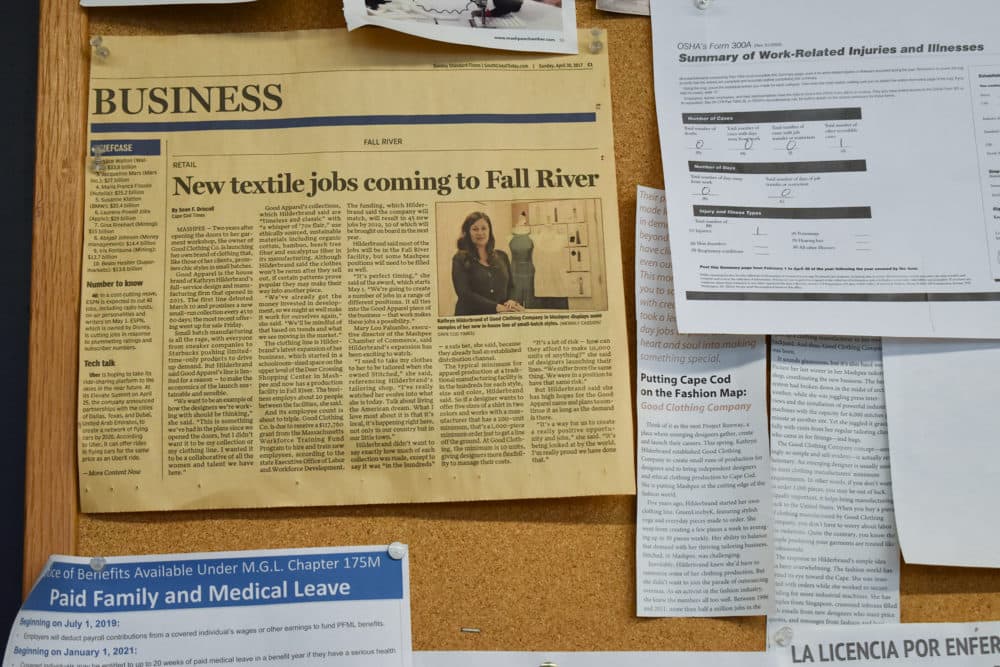
But there’s another important reason Duquette and Hilderbrand started their business close to home: the human cost of the global fashion industry. Good Clothing Company was founded in 2014 after the Rana Plaza factory collapse.
In 2013, the eight-story building collapsed in Bangladesh, killing 1,134 people. Many were working for big American clothing brands, such as JCPenney, Children’s Place and Walmart. The disaster led many consumers to demand better labor standards and more accountability for ethically sourced clothing.
Workers are still subjecting themselves to violence and unsafe working conditions to make clothes, says Carry Somers, founder and global operations director for nonprofit Fashion Revolution.
The organization conducted a survey of 540 garment workers in Bangladesh, India and Cambodia — which found 5% of workers reported being hit on the job and 40% of workers in Bangladesh had seen a fire in their workplace, she says.
“We know that the further down the supply chain, the more we're likely to see environmental abuses. We know that of the human rights abuses like modern slavery and forced labor,” she told Here & Now last month. “Exploitation thrives in hidden places.”
Clothing production rapidly shifted away from the U.S. in the 1990s, when about half of the nation’s clothing was domestically manufactured, says Pietra Rivoli, an economist at Georgetown University.
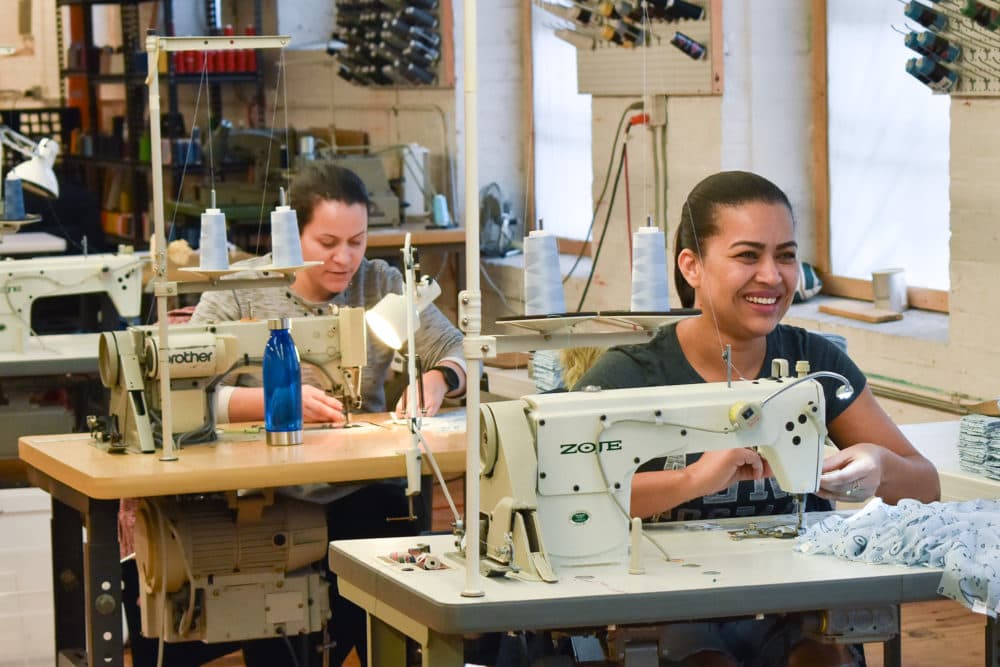
Making clothing is a labor-intensive process that requires many workers using sewing machines, so companies calculated that they could lower costs by moving apparel production to China, she says. Now, she says automation gives companies less incentive to move abroad.
“The more you mechanize it, the more the cost advantage tilts back to the U.S.,” she says.
But according to Nancy Hodges, who heads the Department of Consumer, Apparel and Retail Studies at the University of North Carolina, Greensboro, automation still isn’t as cost-effective as human labor.
It could take between 10 to 15 years before automation alone can make even garments like dress shirts, she says.
“If you turn any of your garments in your closet inside out … you've got a fairly complex structure there,” she says. “That's where the difficulty lies.”
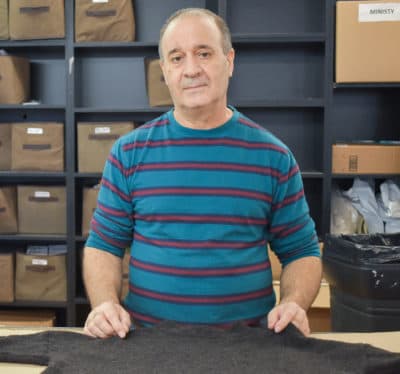
Back at Good Clothing Company, Tony Arruda still uses his hands to cut large rolls of fabric down to size.
The 59-year-old factory cutter started in the fashion industry as a floor boy when he was 19. The first factory Arruda worked in — starting four decades ago — produced skirts, pants and three-piece suits, he says.
Fall River was once an epicenter of domestic clothing manufacturing with more than 100 textile mills. But like most factories in the area, the floor where Arruda found his first job has since closed.
“What I see today is young people,” Arruda says. “They don't want to do this anymore.”
Arruda is one of 17 employees at Good Clothing Company. The owners of the factory say the hardest part of doing business in the U.S. is finding people to work their sewing machines.
The expertise has been exported to other countries — along with the factories.
Peter O'Dowd produced and edited this interview for broadcast with Kathleen McKenna. Allison Hagan adapted it for the web.
This segment aired on January 24, 2020.


